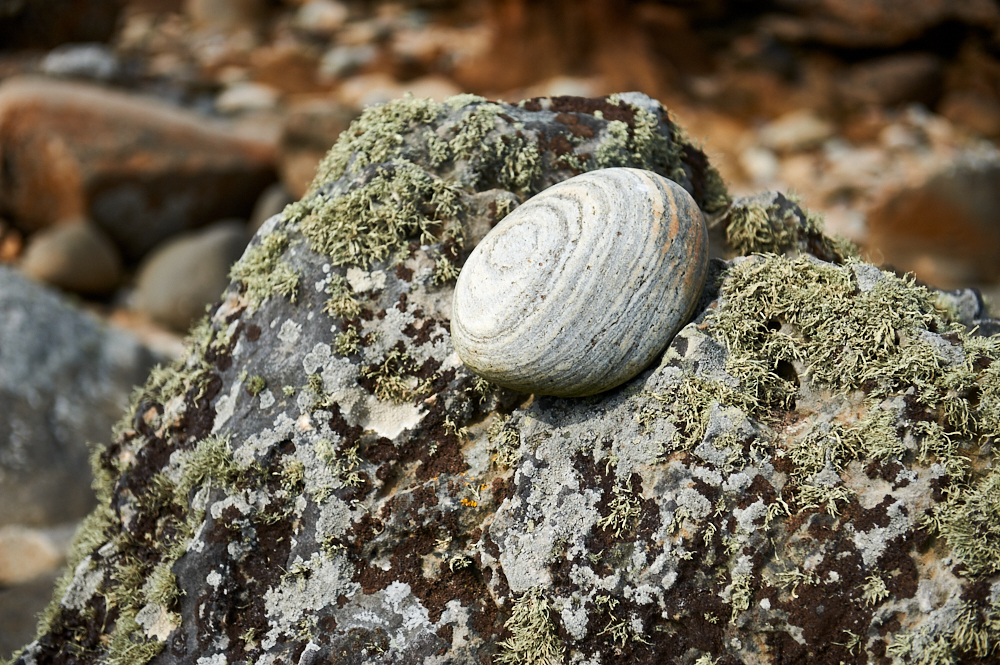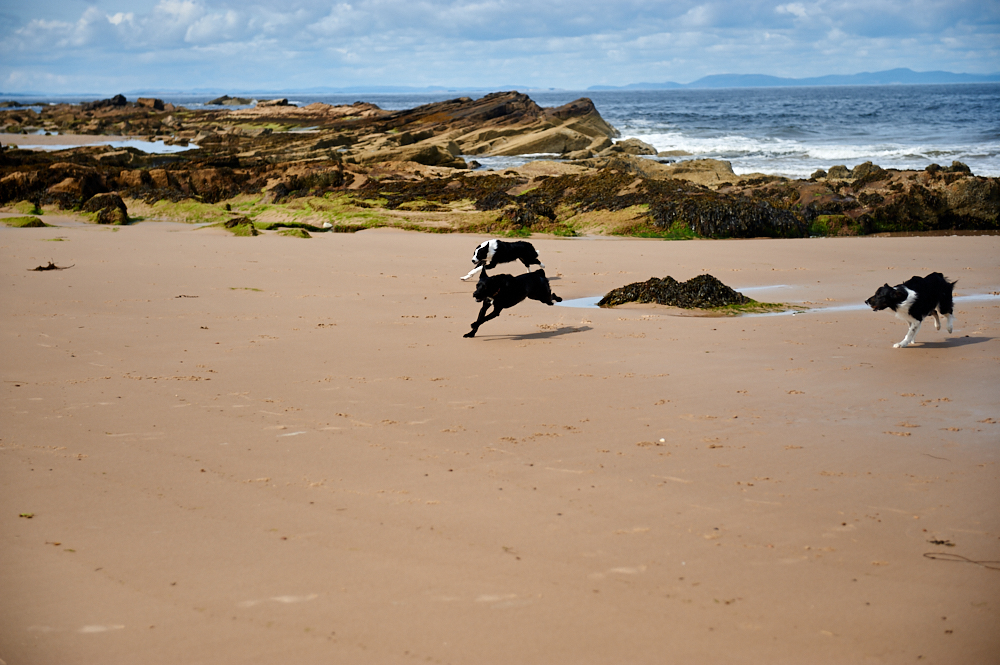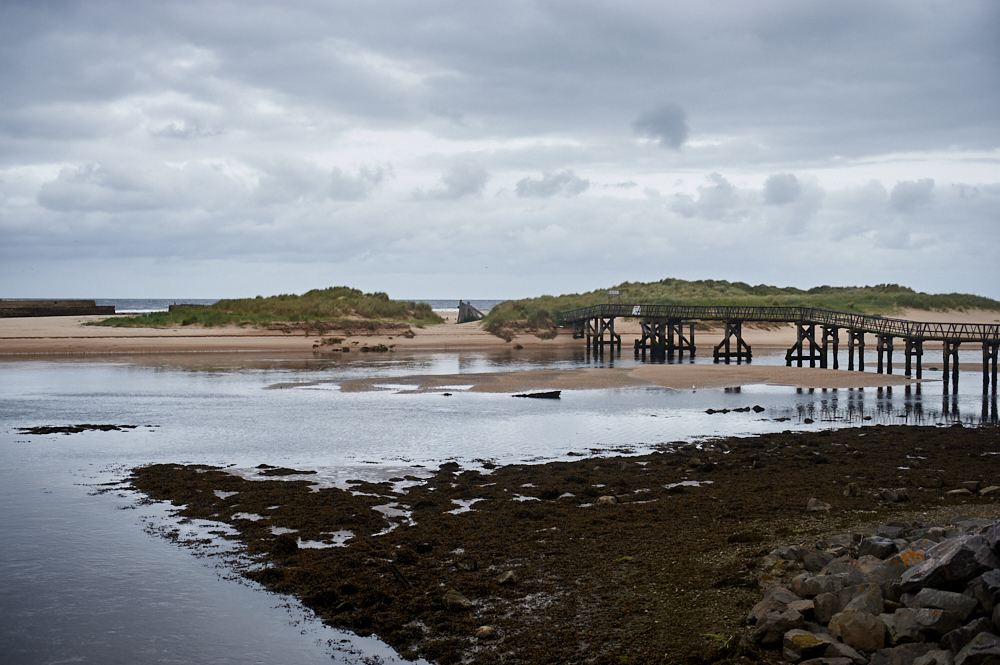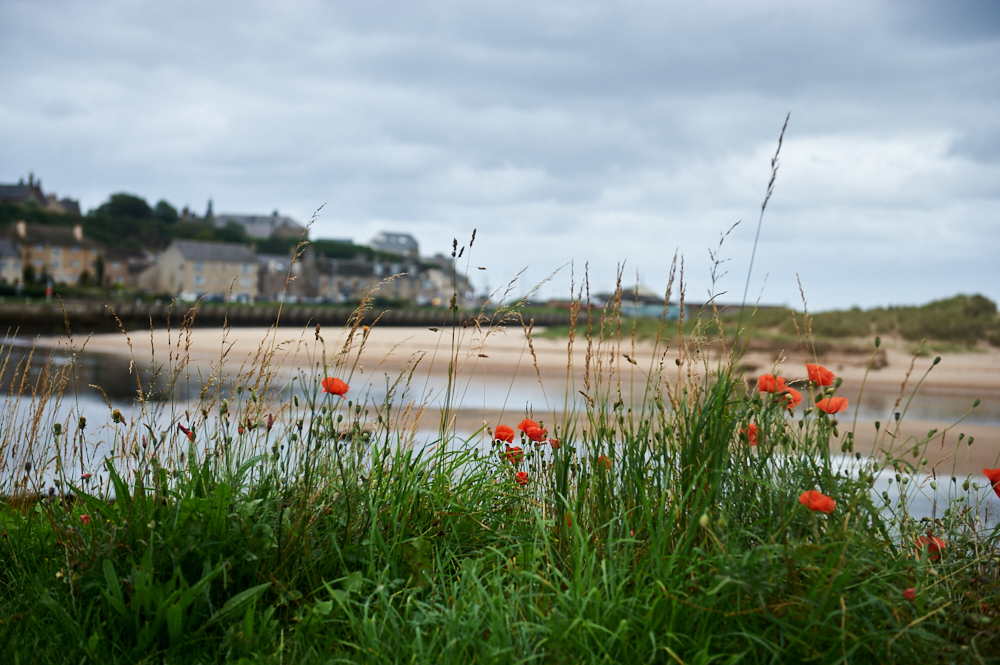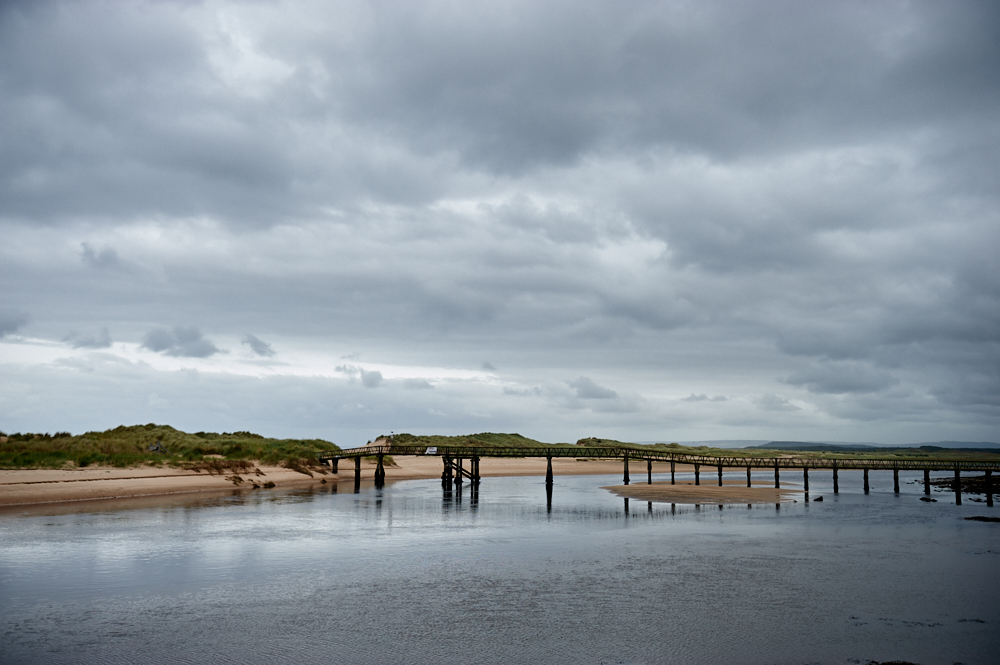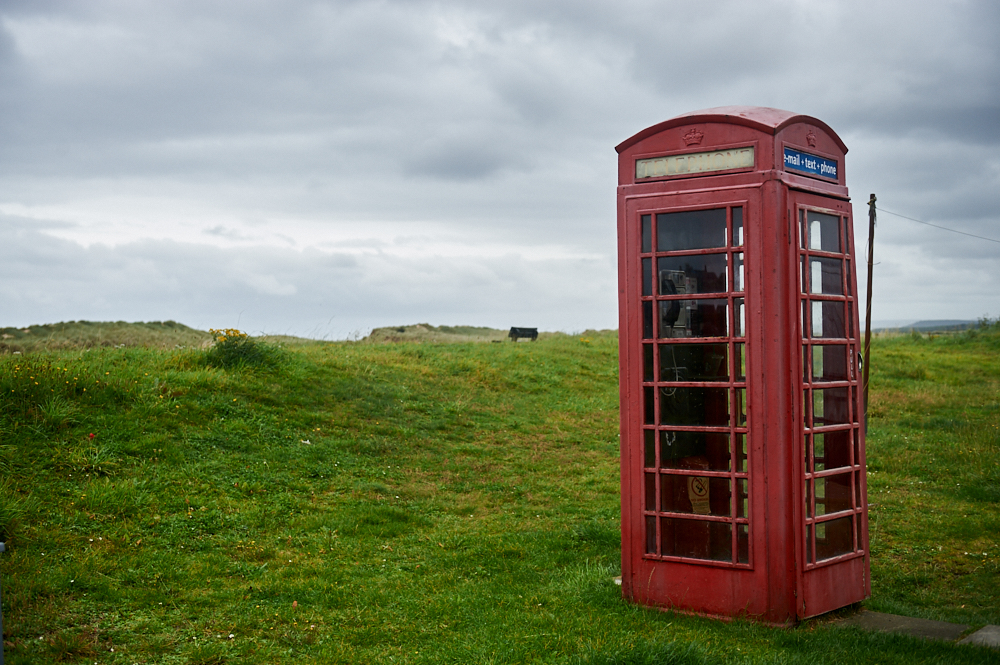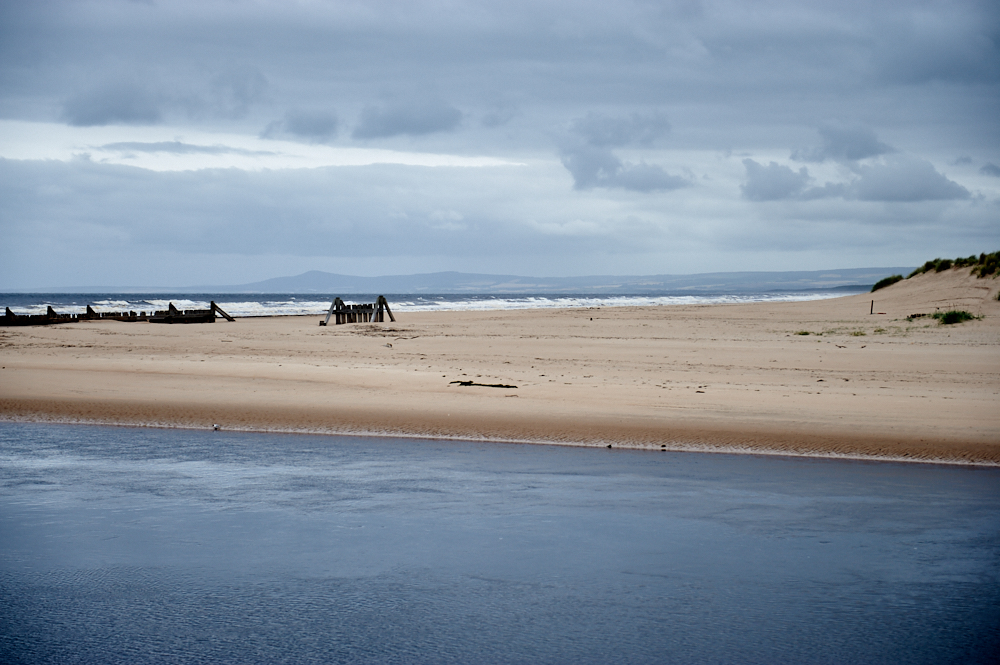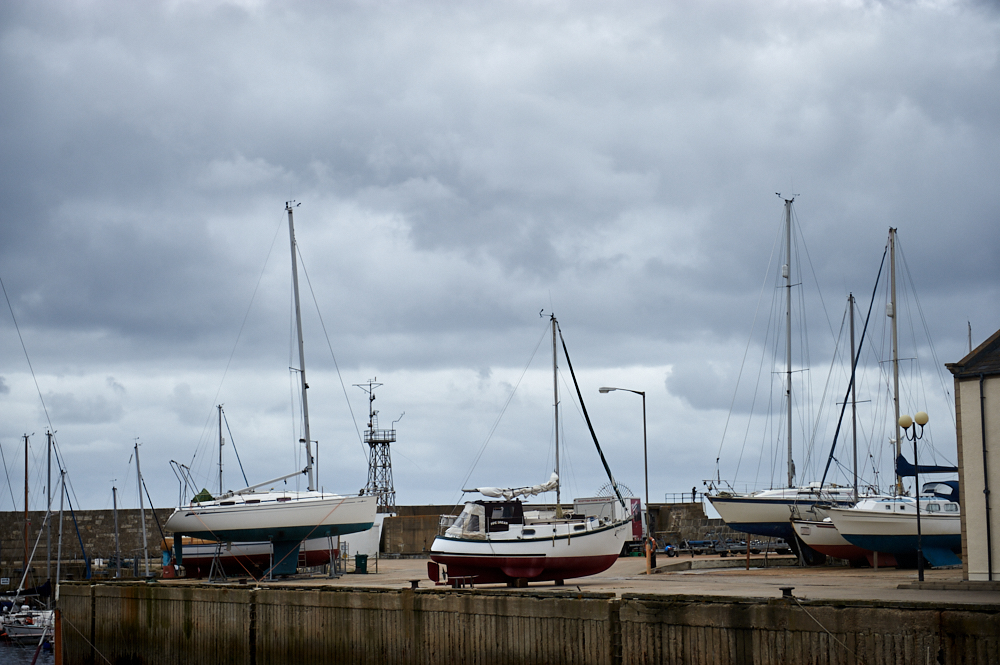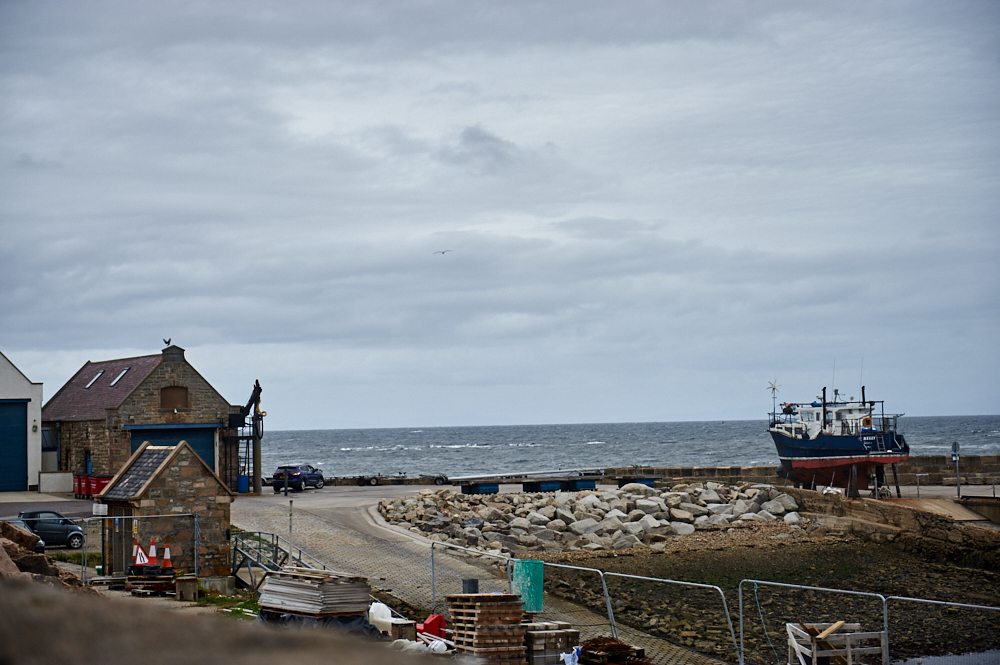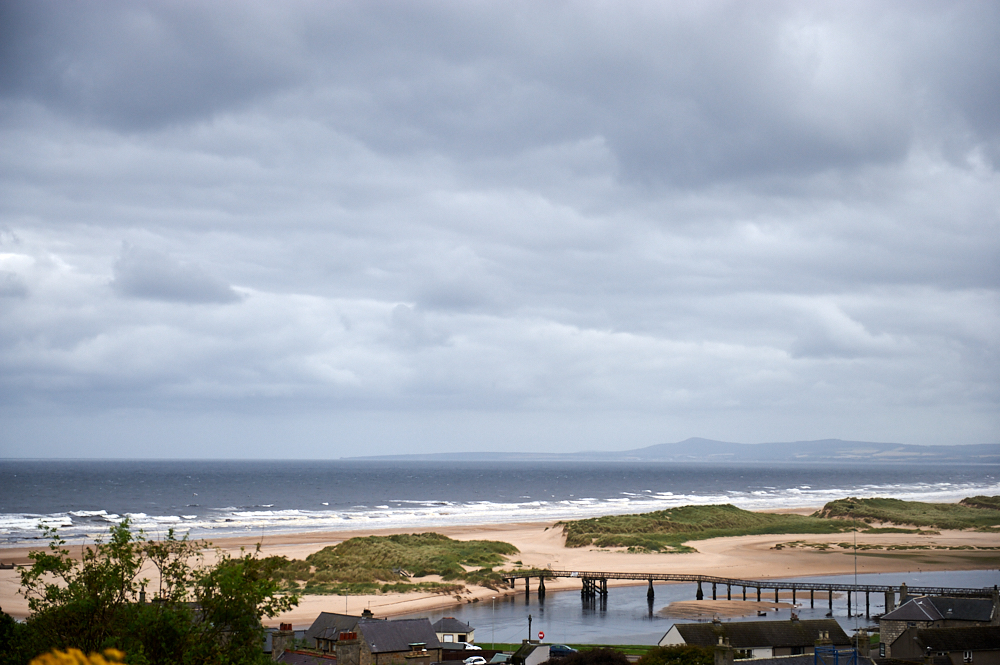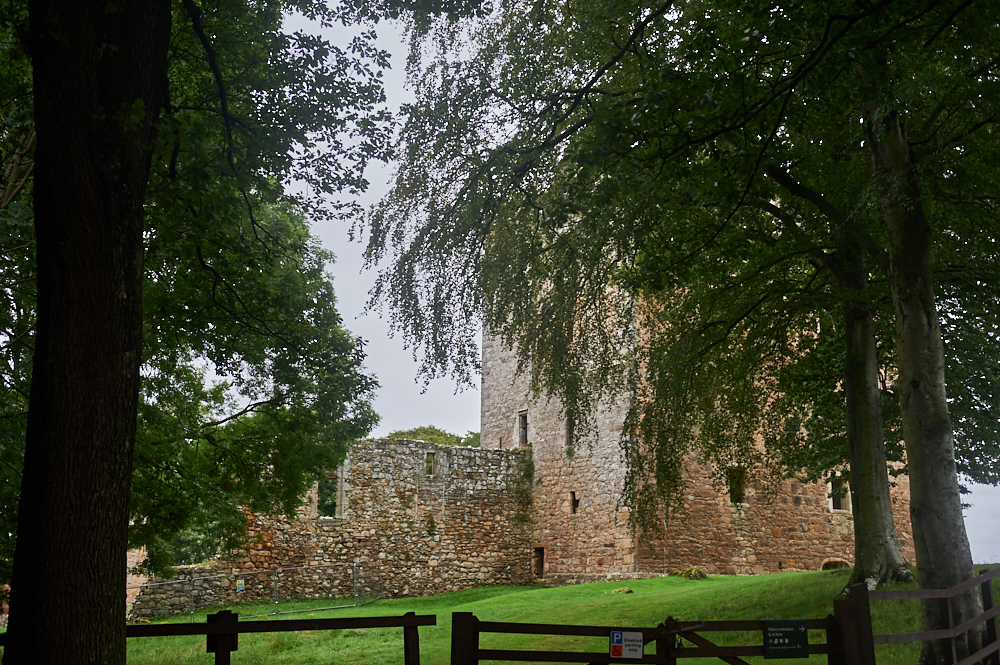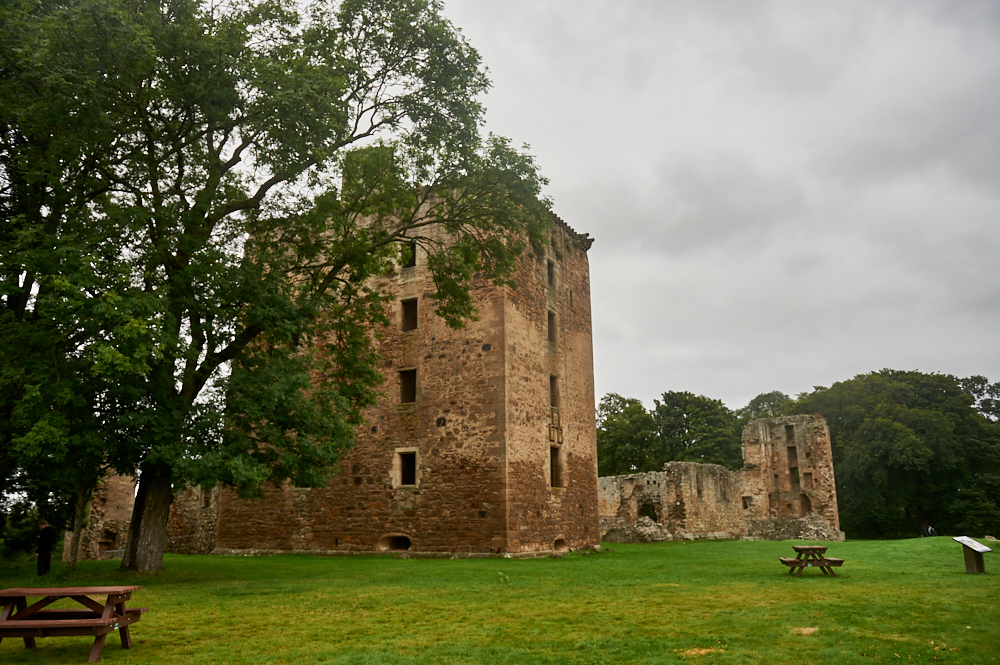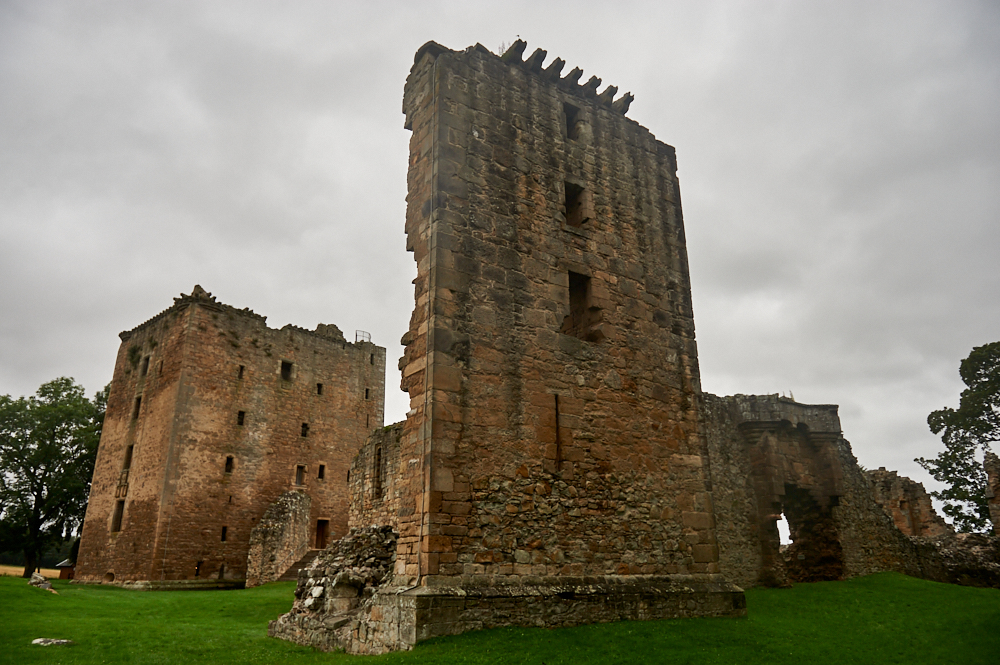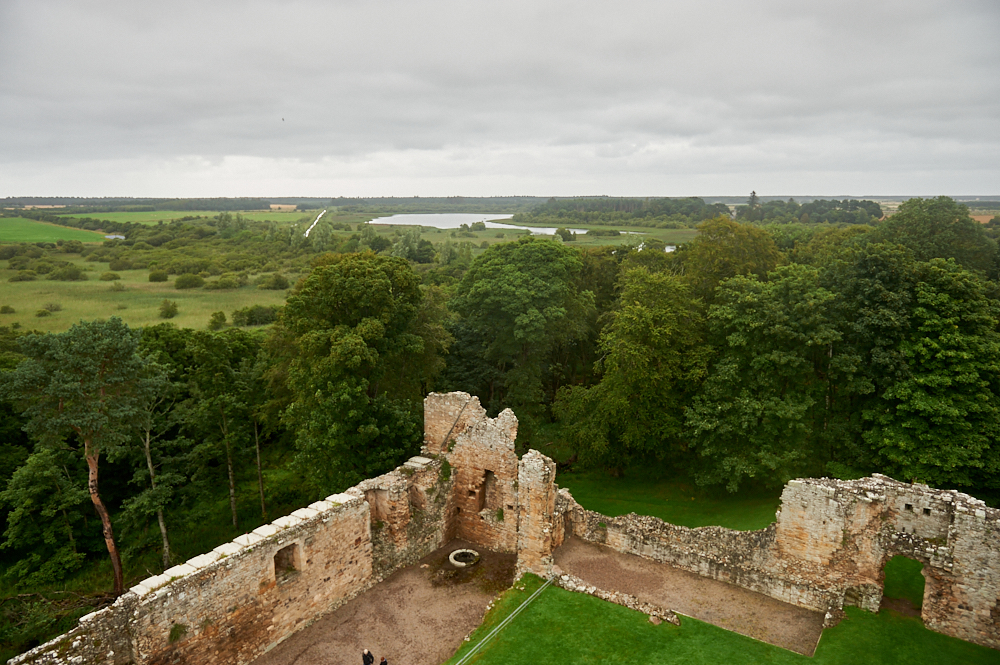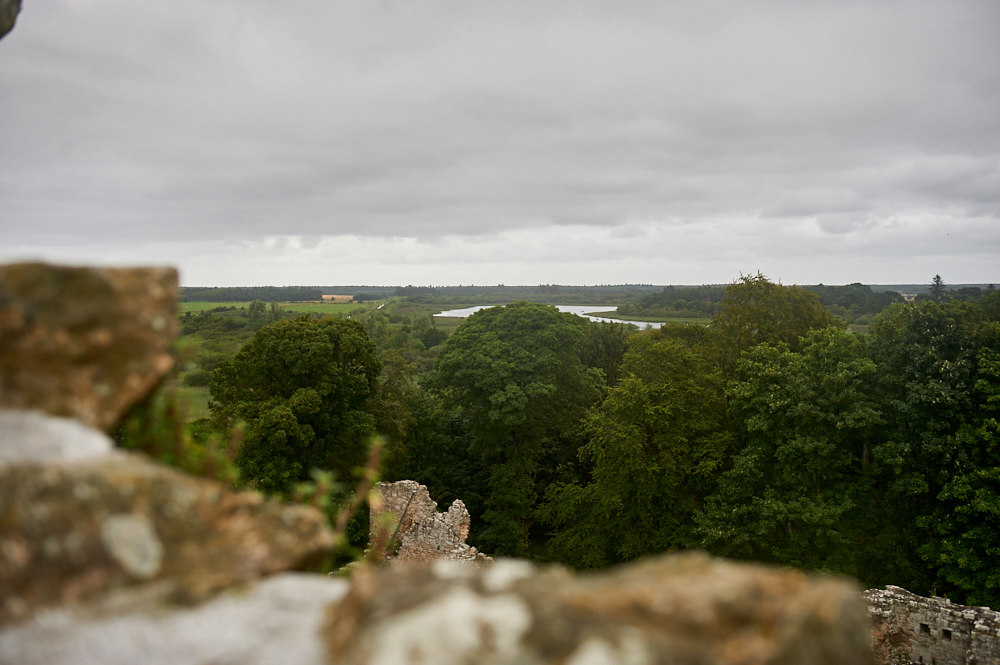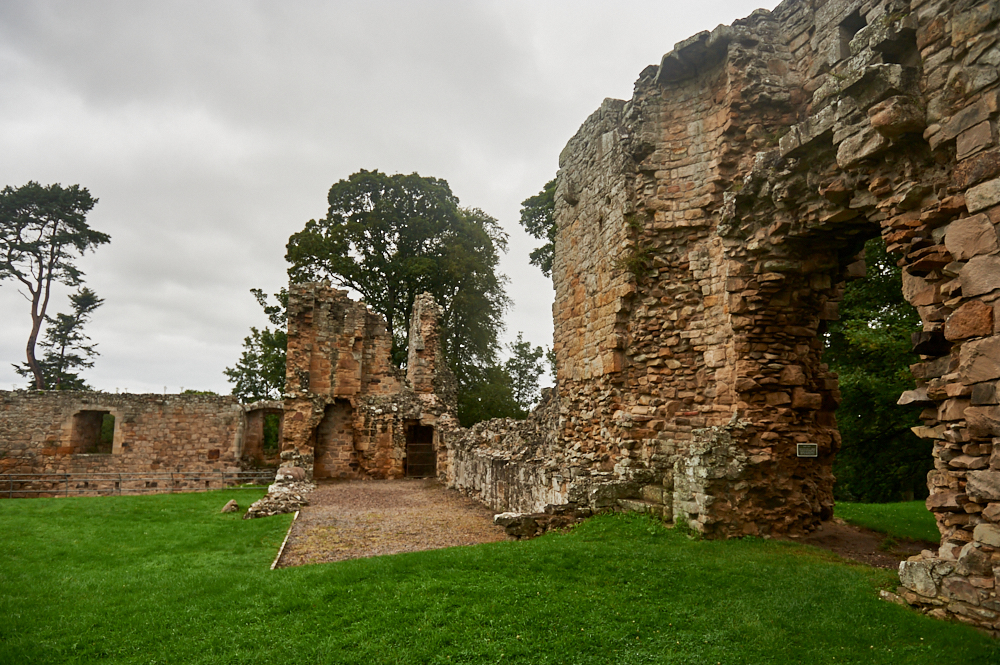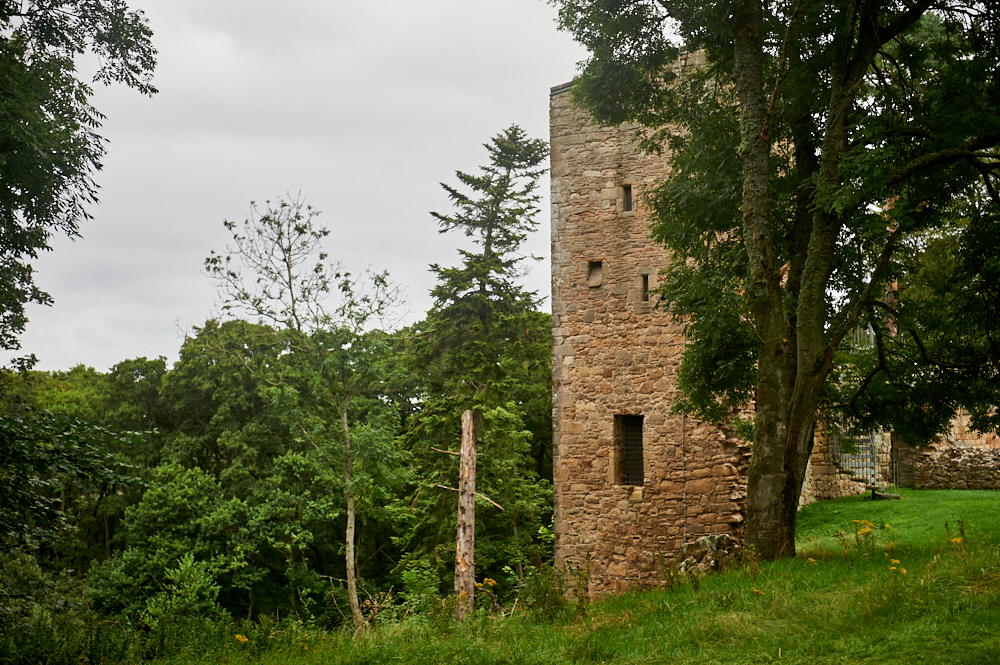
In a time when we shouldn´t go outside I would like to invite you to a virtual walk along the Moray Coastal Walk. Switch on the sound of the Scottish Coast here: Sounds of Scotland and let´s start!
Moray Coast Trail
Beginning inland at the fine country town of Forres, it soon hits the coastline at Findhorn, famed for its eco-community. From here the coastal walking begins across the forested back of the vast Burghead Bay.
The section from Burghead to Lossiemouth has some superb clifftop walking with great seaviews. Further on is Spey Bay, renowned for its dolphins, the ship-building heritage of Buckie and finally a string of picturesque former fishing villages leads on to Cullen, just over 72km from the start. (Walkhighlands)

I started at Hopeman Beach and walked in direction of Lossiemouth with Clashach CoCoveve (Cove Bay) as my destination. Passing by the colourful beach-huts I took a different path than all the other times walking along the beach.
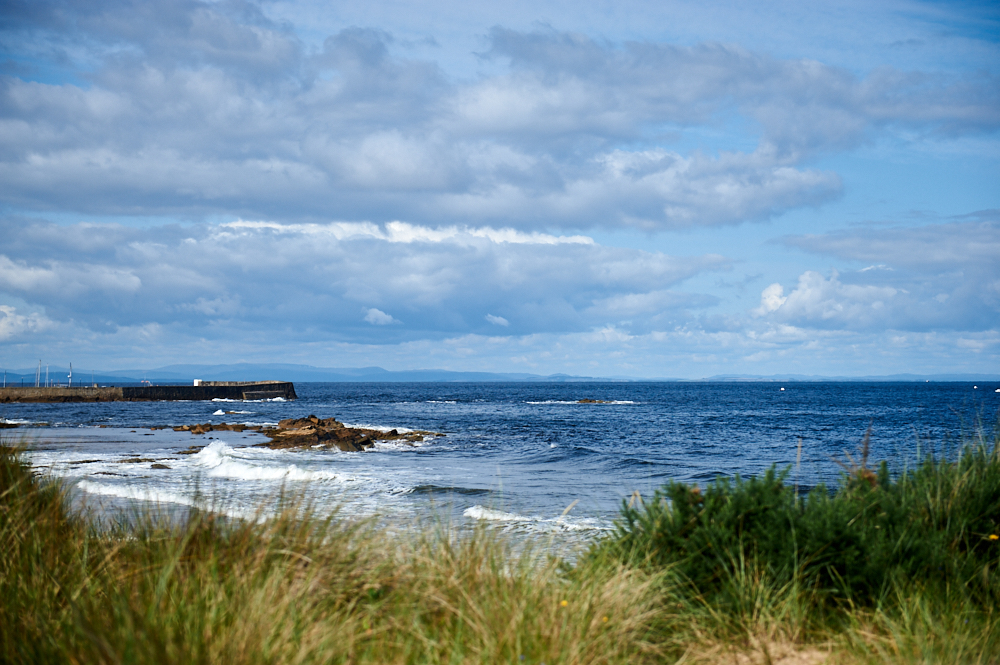
Slowly climbing up the cliffs..
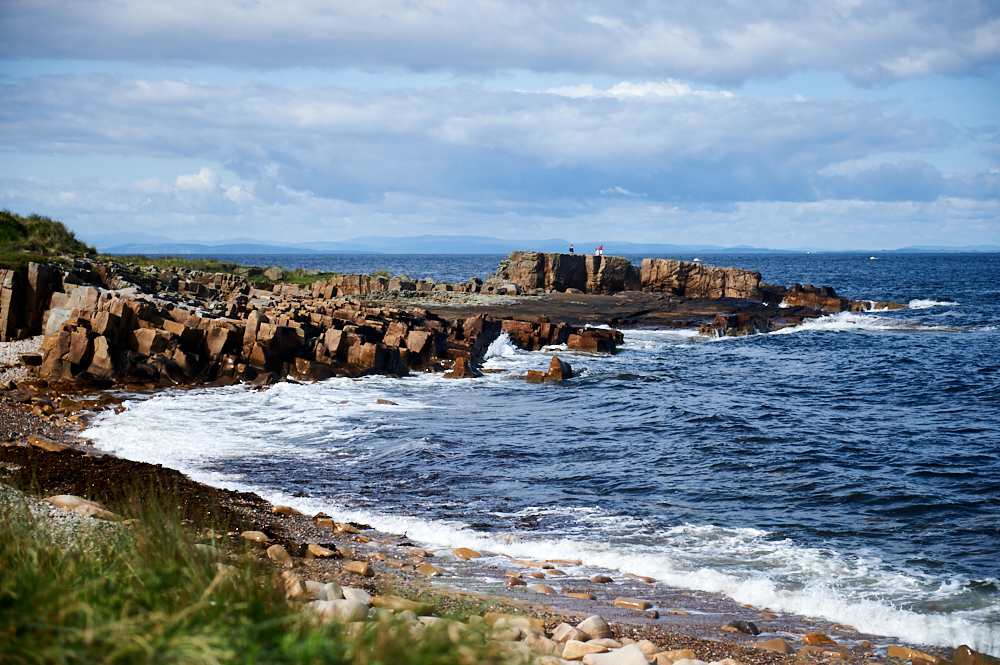
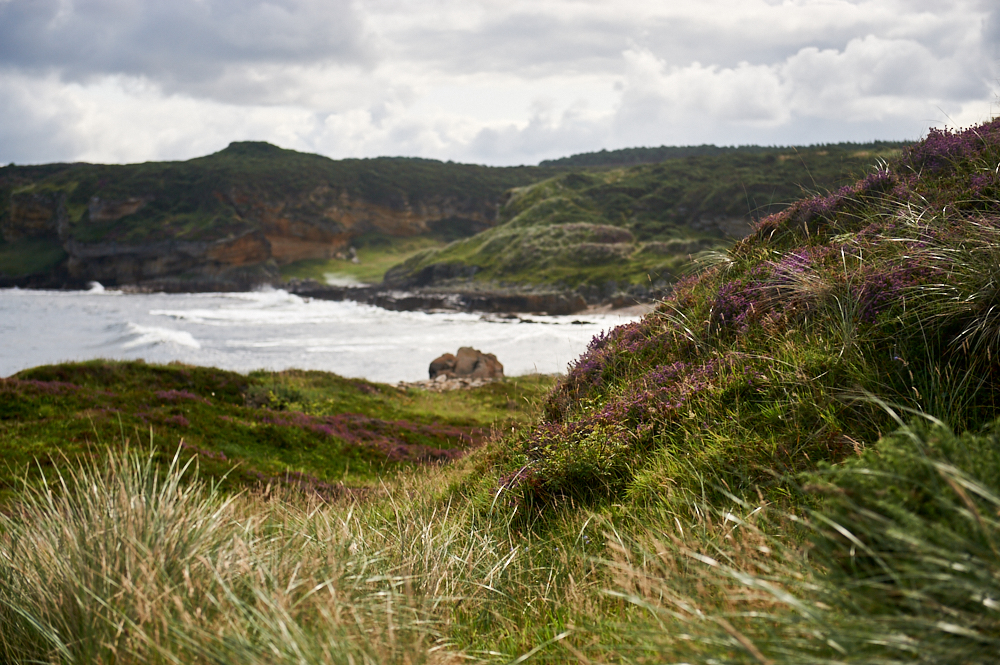
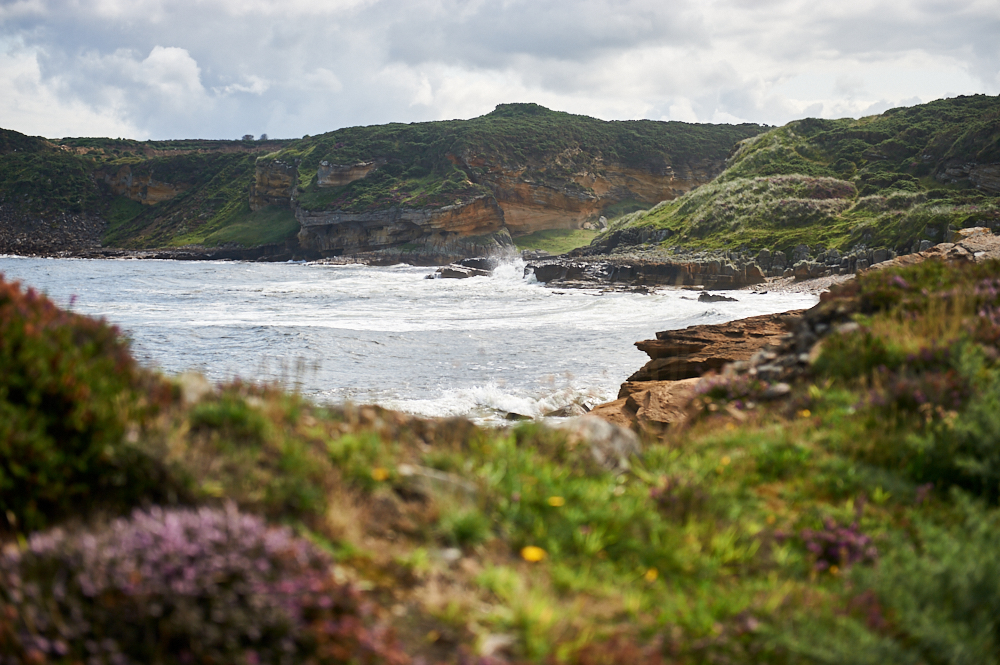
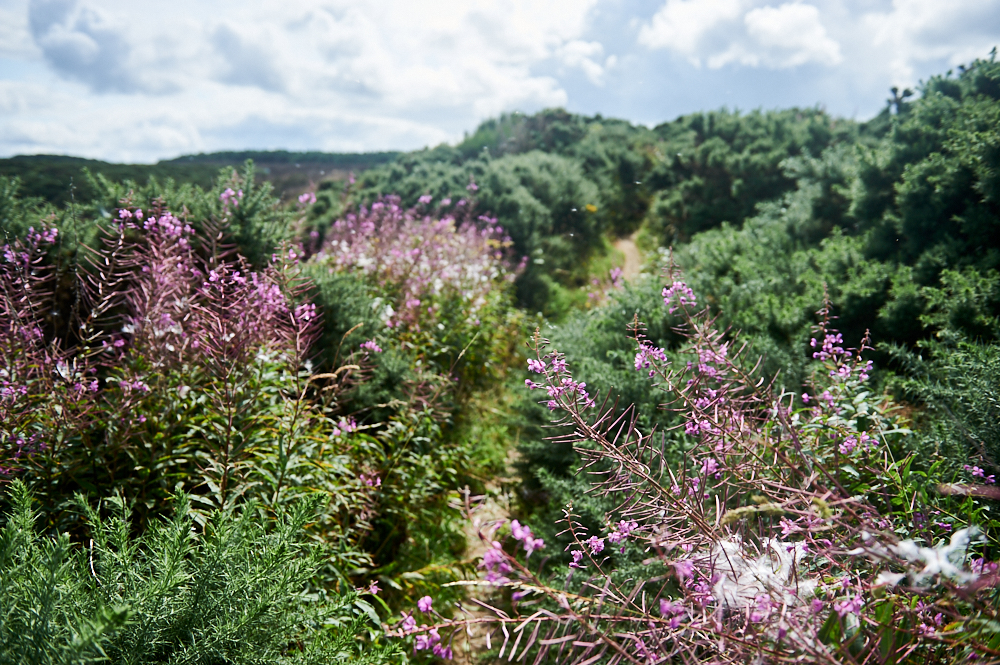
Until I already saw Clashach Cove, a beautiful secluded beach with a few caves.
Clashach Cove (Cove Bay)
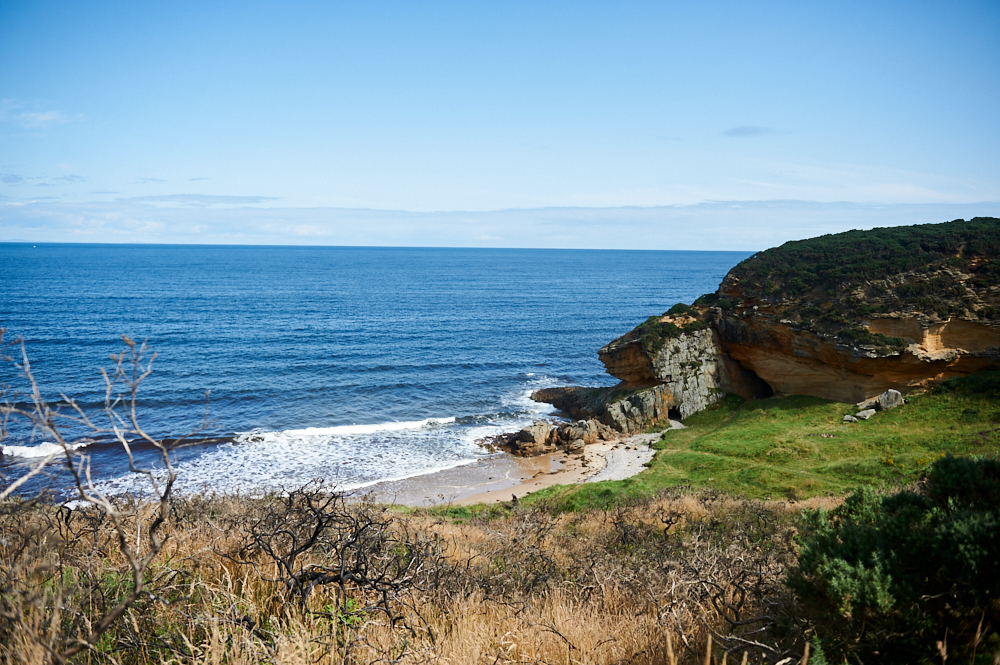
I went once around the bay and also a bit further towards Lossiemouth but didn’t really found a pathway going down to the beach. I kept looking until I saw a few people back climbing up trough all the bushed and thistles and I didn´t have the right shoes and clothes for that. The path seemed to be hidden very well!
But the view from above was lovely!
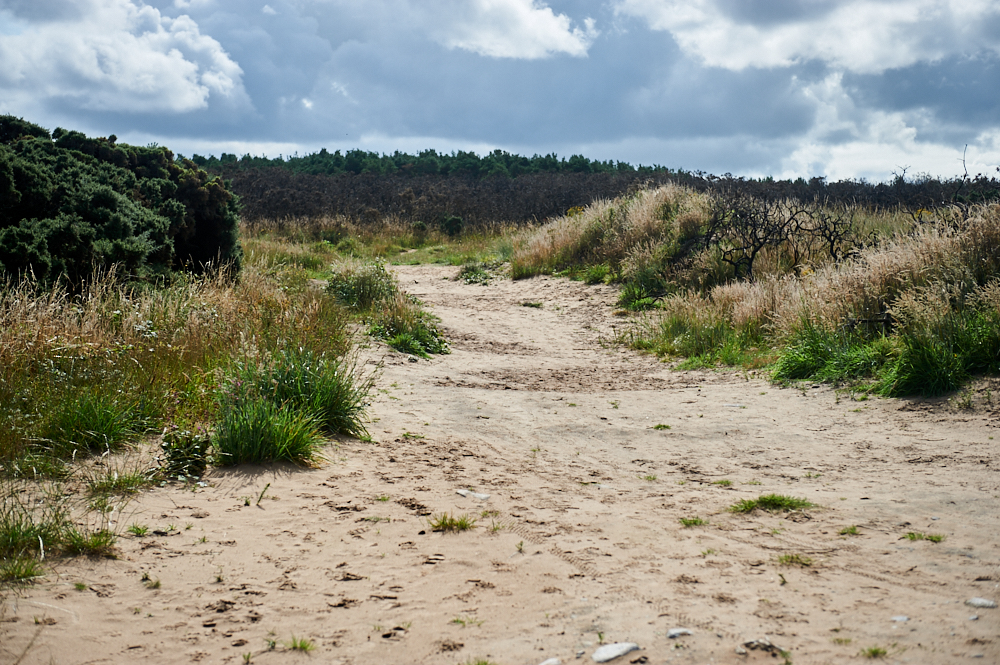

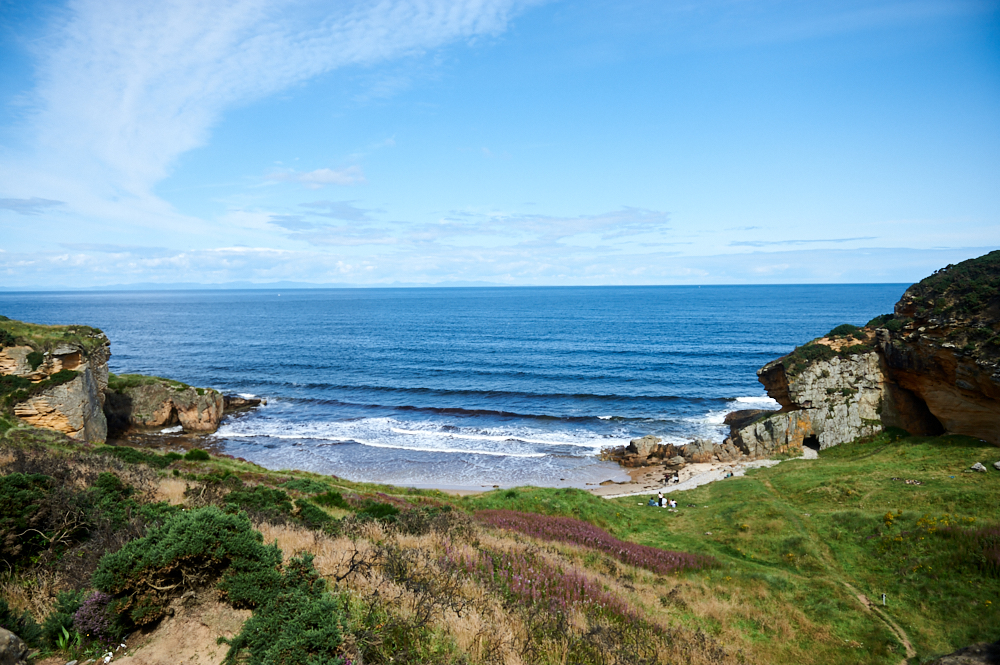
Clashach Cove is an interesting area for geologists, the “old red” sandstone as formed around 360 to 415 million years ago and the “newer” red sandstone is about 200 to 300 million years old.
The is a quarry behind the bay where sandstone has been extracted for building use since the early 1800s. It was also recently used in the construction of the National Museum of Scotland in Edinburgh, the 9/11 memorial in New York and for Antoni Gaudi’s La Sagrada Familia in Barcelona.
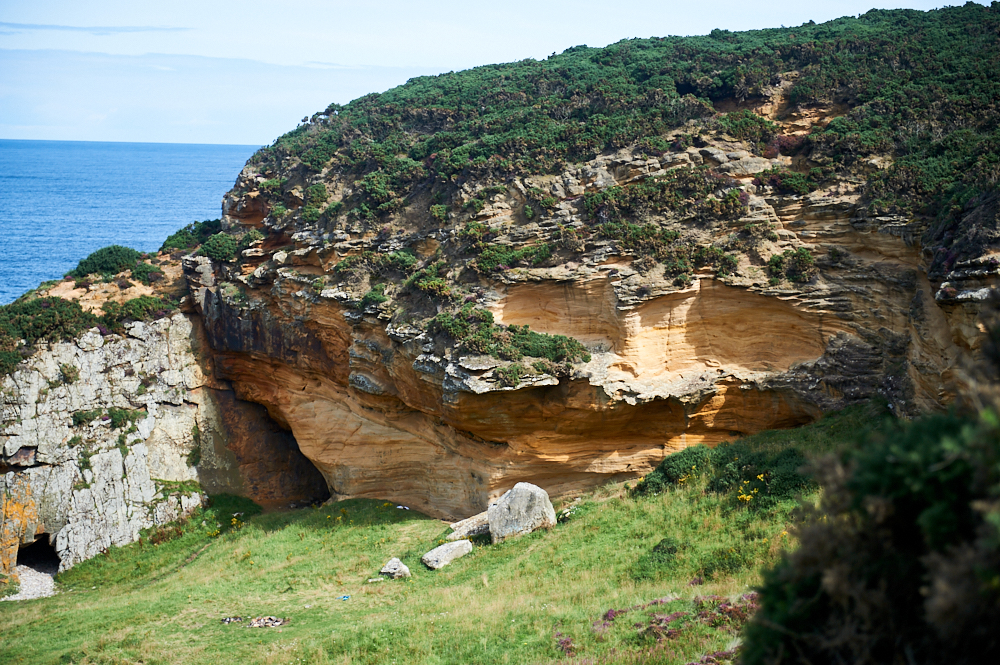
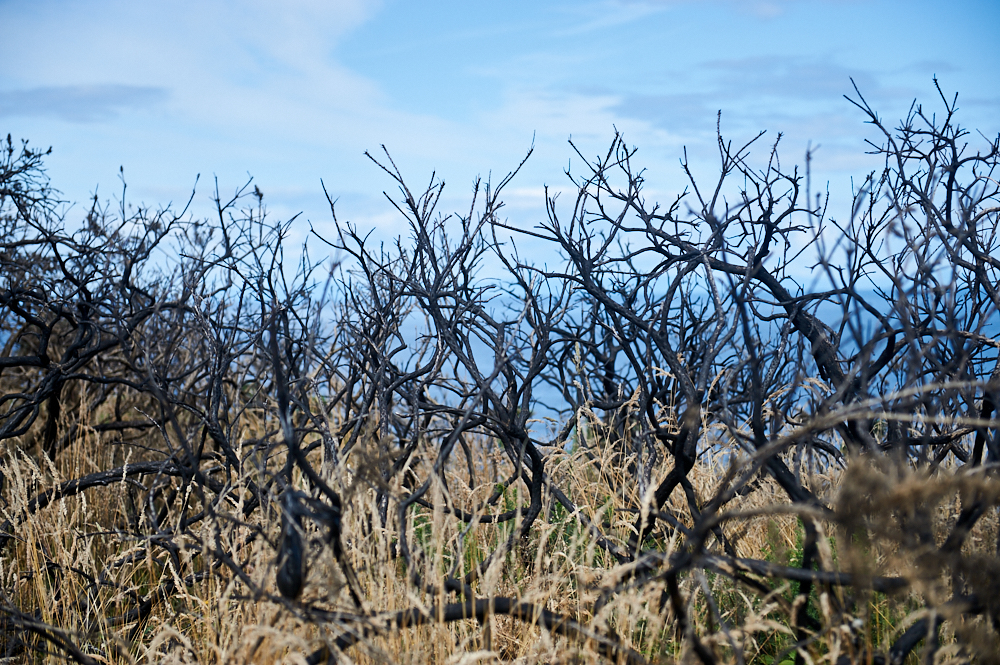
I made my way back towards Hopeman and continued a bit in direction to Burghead.



